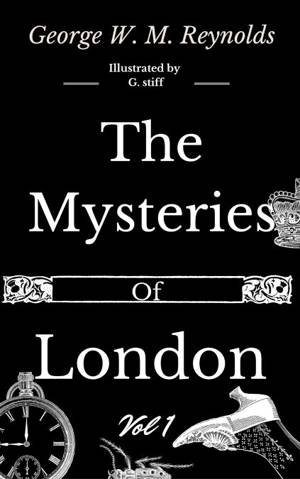
- Afhalen na 1 uur in een winkel met voorraad
- Gratis thuislevering in België vanaf € 30
- Ruim aanbod met 7 miljoen producten
- Afhalen na 1 uur in een winkel met voorraad
- Gratis thuislevering in België vanaf € 30
- Ruim aanbod met 7 miljoen producten
Zoeken
Omschrijving
The Mysteries of London is a penny dreadful or city mysteries novel begun by George W. M. Reynolds in 1844. Reynolds wrote the first two series of this long-running narrative of life in the seedy underbelly of mid-nineteenth-century London. Thomas Miller wrote the third series and Edward L. Blanchard wrote the fourth series of this immensely popular title. Michael Angelo in Penny Dreadfuls and Other Victorian Horrors writes: Reynolds had read Eugene Sue while in Paris and was particularly impressed by his novel Les Mystères de Paris (The Mysteries of Paris). It inspired Reynolds to write and publish a penny part serial The Mysteries of London (1845), in which he paralleled Sue's tale of vice, depravity, and squalor in the Parisian slums with a sociological story contrasting the vice and degradation of London working-class life with the luxury and debaucheries of the hedonistic upper crust. An early socialist and a Chartist sympathizer, Reynolds had a genuine social conscience, and he contrived to stitch into the pages of his books diatribes against social evils and class inequities. (79) Instalments were published weekly and contained a single illustration and eight pages of text printed in double columns. The weekly numbers were later bound in cloth covers with a fresh title page and table of contents and offered as complete works of fiction. After Reynolds quit The Mysteries of London, he began a new title: The Mysteries of the Court of London, which ran from 1848 until 1856.
Specificaties
Betrokkenen
- Auteur(s):
- Illustrator(s):
- Uitgeverij:
Inhoud
- Aantal bladzijden:
- 800
- Taal:
- Engels
Eigenschappen
- Productcode (EAN):
- 9783961646944
- Verschijningsdatum:
- 5/03/2017
- Uitvoering:
- E-book
- Formaat:
- ePub

Alleen bij Standaard Boekhandel
+ 1 punten op je klantenkaart van Standaard Boekhandel
Beoordelingen
We publiceren alleen reviews die voldoen aan de voorwaarden voor reviews. Bekijk onze voorwaarden voor reviews.








